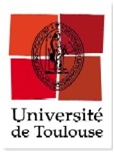The MUSE eXtremely deep field: first panoramic view of an Mg II emitting intragroup medium
Résumé
Using the exquisite data from the MUSE eXtremely Deep Field (MXDF), we report the discovery of an Mg II emission nebula with an area above a 2σ significance level of 1000 proper kpc2. This provides the first panoramic view of the spatial distribution of magnesium in the intragroup medium of a low-mass group of five star-forming galaxies at z = 1.31. The galaxy group members are separated by less than 50 physical kpc in projection and ≈120 km s−1 in velocity space. The most massive galaxy has a stellar mass of 109.35 M⊙ and shows an Mg II P-Cygni line profile, indicating the presence of an outflow, which is consistent with the spatially resolved spectral analysis showing ≈+120 km s−1 shift of the Mg II emission lines with respect to the systemic redshift. The other galaxies are less massive and only show Mg II in emission. The detected Mg II nebula has a maximal projected extent of ≈70 kpc, including a low-surface-brightness (≈2 × 10−19 erg s−1 cm−2 arcsec−2) gaseous bridge between two subgroups of galaxies. The presence of absorption features in the spectrum of a background galaxy located at an impact parameter of 19 kpc from the closest galaxy of the group indicates the presence of gas enriched in magnesium even beyond the detected nebula seen in emission, which suggests that we are observing the tip of a larger intragroup medium. The observed Mg II velocity gradient suggests an overall rotation of the structure along the major axis of the most massive galaxy. Our MUSE data also reveal extended Fe II* emission in the vicinity of the most massive galaxy, aligned with its minor axis and pointing towards a neighboring galaxy. Extended [O II] emission is found around the galaxy group members and at the location of the Mg II bridge. Our results suggest that both tidal stripping effects from galaxy interactions and outflows are enriching the intragroup medium of this system.Key words: galaxies: groups: general / Galaxy: formation / galaxies: evolution / galaxies: interactions / intergalactic medium⋆ Based on observations made with ESO telescope at the La Silla Paranal Observatory under the large program 1101.A-0127.
Origine : Fichiers éditeurs autorisés sur une archive ouverte


